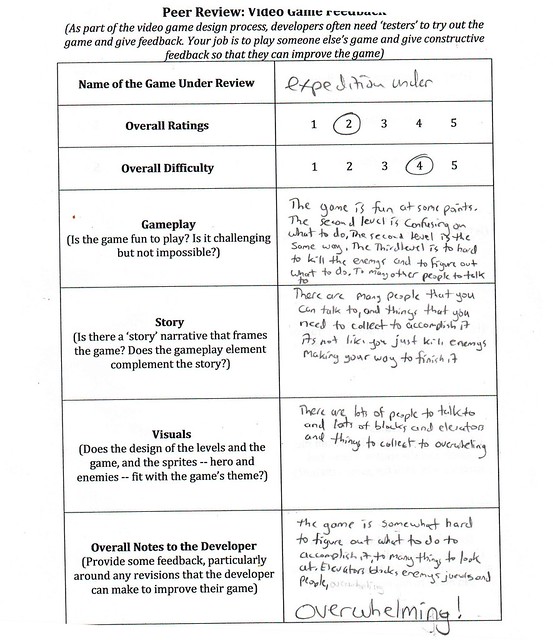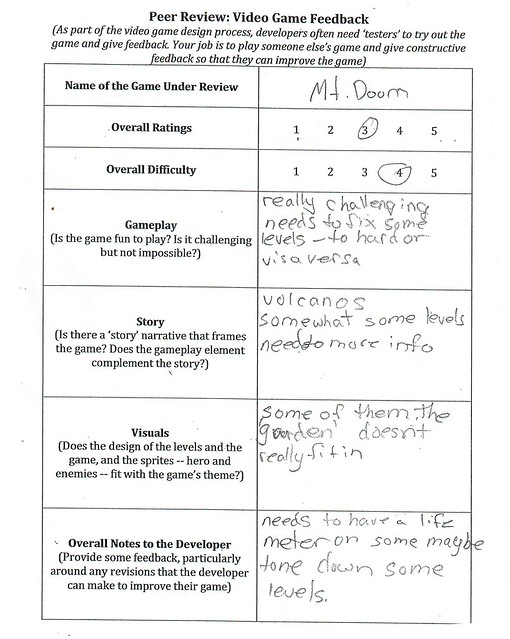I’ve been doing very little other than reflecting on our current science-based Game Design Unit now underway. But it occurred to me the other day how far back this idea of how to use game design in my writing classroom began to ferment. It all began with the National Writing Project, and a session that I attended at the 2010 NWP Annual Meeting on gaming. There, we learned about the philosophical underpinning of game design theory and how those concepts can intersect with learning. We played games; we made games; we talked games.
I came away from that annual meeting, thinking: this is important.
But I had no idea where to begin. Then, I realized that the youth summer camp program that our Western Massachusetts Writing Project runs would be a perfect incubator for ideas, and with the help of my WMWP colleague, Tina, we launched a very successful and interesting summer camp program for about 15 game-playing boys, using Gamestar Mechanic and Scratch and some other programs for a week-long adventure into somewhat unknown territory for both Tina and I.
I saw enough of what was going on in that small group to think: this has real potential for my classroom.
But I vacillated towards the end of the summer: should I consider offering an after-school gaming program? Or should I bring the video game design ideas into all four of my sixth grade classroom? Was I ready for that? I even emailed my principal, asking if I could get permission to run a for-profit after-school gaming program. He supported the idea. Then, I had second thoughts. Who would come to that program? A select few hard-core gamers. I always complain that some of the most innovative ideas seem to be happening only outside of school. Who did I want to reach? All of my students. I want them all to be engaged. I decided against the after-school idea.
That’s when the National STEM Video Game Challenge came back onto my radar screen, and I realized that a collaboration between my science teacher colleague and myself might lead to something interesting: science-based video game designs that might have the potential for national recognition. That’s where we are right now: in the midst of game development, and it’s hectic, crazy, fun, interesting and exciting to be in my classroom every single day. There are challenges, and collaborations, and technical hurdles, and writing going on. It’s an amazing amount of learning.
And so, this path that began at the conference with the National Writing Project, and emerged in our Western Massachusetts Writing Project youth camp, is now flowering in my classroom for my 75 sixth graders. Sometimes, journeys begin like that, and that is the potential power of conferences to lead to change in the classroom (I say, somewhat sadly, because the defunding of the National Writing Project means no more conferences like that, for me).
Peace (in the reflection),
Kevin

